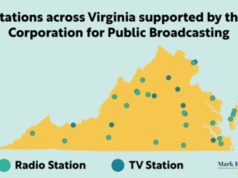
Johnson (Atlantic editor, not the economist) notes:
median pay took a nosedive after 2007, effectively wiping out all gains made in the previous eight years. The macro explanation is that the economy shrunk, and middle class jobs disappeared and were replaced with (or outlasted by) lower-paying positions that companies kept on.
There are significant differences by industry.
But then there is this. Some questioned how much of the impact upon the median was because of parttime workers, so Johnson went back and pulled out some interesting data from Bureau of Labor Statistics, to wit:
Our official measures of part-time workers are inconsistent, but the Bureau of Labor Statistics’ data on workers by hours-per-week is here. What we know: About 24 million people worked less than 29 hours a week in 2010. About 35 million people worked 34 hours a week or less in 2010
To put that into context, according to the wage statistics from Social Security, there were 150,398,796 wage earners in 2010.
I have a few comments, on the part-time workers and on the data as a whole.
The Social Security table is interesting to examine. The table is organized by net compensation, which for the nation totaled 6,009,831,055,912.11, of which some 210 billion was not Social Security wages. For purposes of analysis, let’s use the 6 trillion number as the total value of wages for the year.
Note the following tidbits
if you made a million or more, you made more in wages alone than did 99.93768% of the American people. And remember, most people making that much in wages make substantially amounts through other means. Capital gains are taxed only at 15%, and people who have huge salaries often get even more through exercising their stock options, whereas those lower down the wage scale often have little access to such opportunities.
There are 93,705 people reporting wages of over a million dollars. Those people collectively had wages just under 516 billion dollars, or an average of about 5.5 million each.
That is around 15% of the total national wages, by les than 7/10% of the wage earners. That is substantially more than the greater than 60 million people whose wages were less than 20,000/year, who together represent more than 41% of all wage earners.
To put that 20K/year into context, consider the federal minimum wage, which went to 8.25 on July 1 of 2010. To make 20,000 one would have had to work over 2400 hours. Except at 52 weeks at 5 days a week that is 260 days. Take out 10 days for holidays and even if one takes no vacation, that is 250 days. If one worked 8 hours a day, that is still only 2000 hours, or only 16,500 in wages.
Also think how much worse it might have been for those at the lower end of the wage scale had the federal minimum wage not been increased early in the Obama administration. Then remember that those at the upper end still would have seen the increases they have gotten. As bad as wage and income disparity are and are getting, things would have been much worse.
Let’s return to the figures on those working parttime.
Yes, it is true some portion of those 35 million are students, or people who can only work while children are at school. But some are those who cannot get more hours because employers don’t want to pay benefits, and this applies to those working even more hours – remember the tales of workers at WalMart who were assigned just under the number of hours at which the company would have been required to pay benefits?
When one looks at parttime workers and the issue of benefits, this does not just apply to “low-skilled” jobs requiring little education. The percentage of higher education course being taught by adjuncts, for whom institutions do not have to pay benefits, has been increasing just as rapidly, often with administration pay increasing even more quickly.
In most of the country it is pretty much impossible to live on one’s own with a fulltime job at minimum wage. Even at twice minimum wage, at 16.60/hour with benefits, you would not be that much above the poverty level were you the sole support of a family of four (spouse and two small kids) living in many metropolitan areas.
We cannot expect our economy to recover until those at the base of the income pyramid have more disposable income. For most of them that income will be solely from wages. If corporate revenues continue to be slanted towards management, if national and state (are you listening Governor Cuomo of NY) continue to advantage the imbalances in wages and other forms of compensation in favor of those who are already at the upper reaches of the pyramid, we will quickly cease to be democratic. We may remain a republic in name only, but the title of banana republic will appropriately migrate north to be applied to us, along with the bananas we import to eat on our cereal if we are middle class and in our banana splits if we are better off.
Perhaps 47% of us do not pay federal income taxes. Look how many make so little in wages. And remember, all of them are paying payroll taxes, which if the wage tax holiday expires will be back above 7.5%.
On Rachel’s show last night, hosted by Melissa Harris Perry, there was a segment that noted how much our politicians focus on the middle class. We ignore the poor. Somehow it is not seen as politically wise to discuss them.
What too many do not realize is that given the costs of living in most of this nation, increasing percentages of our population are poor. And were we to properly define what income is necessary to live at above a real poverty level, we might discover that it is not 1 in 5 Americans, but perhaps even more than 1 in 4, with a substantial number of additional Americans in danger of falling into that category. After all, no job can mean no health insurance. Extended unemployment means no unemployment compensation.
Local and state governments lose revenue because of loss of income and sales to tax as people lose jobs. They lay off employees, including teachers, police and firemen, and that compounds the problem.
Yesterday I had surgery to fix two hernias. In recent years I have had several emergency room visits for severe allergic reactions. I have had several angiograms. These and other medical procedures I have undergone cost tens of thousands of dollars. I am employed, I have good medical benefits, and my out of pocket costs were well under 10% of the bills. Factor in my health insurance payments (the funds for which are not subject to federal or state income taxes) and I still paid less than 1/4 the sticker price. Absent that insurance, I would not have been able to afford the treatments, the tests, etc. I would have been less productive at work, had I been able to continue. I am, despite cuts to my income as my school district is in severe financial crisis, still upper middle class in income and lifestyle. I am far luckier than many people, and I know it.
Somehow too many who are at the top of the income pyramid have no idea of the financial realities of the lives of most American. Or else they simply don’t care.
A Congressman or Senator who is not in the leadership received a salary in 2011 of 174,000/year. That means their salaries were greater than more than 98% of their constituents. They are not only part of the powerful, they are among the richest of Americans, at least in wages.
Perhaps they should remember the 98%.
It is not that this country cannot afford to raise the money to meet our needs, to stimulate the economy, to put our financial house in order.
Republicans argue we cannot afford to keep our teachers and firemen and police employed. They will not allow a vote on the President’s proposal to save their jobs.
Republicans don’t seem to see the need to fix our crumbling roads, bridges, tunnels and dams.
What if the government did not educate their workers?
How would they get those goods still made to market absent infrastructure?
How would what workers they still employee get to work without the infrastructre?
The top 81 wage earners in the nation totaled $6,447,878,556.79 for an average of $79,603,438.97. I am quite sure that for these 81 that represents a relatively small percentage of their income. That 50% of wage earners whose income averaged just over $26,000? For them that was probably all or almost all of their income.
Compare those figures. Consider this: 79,603,438.97/26,364 (the divisor being the actual 2010 median wage) = 3,019+. Each of those 81 earned on average more than the average of 3000 of those in the lower 50% of the wage pyramid.
These are realities.
They are getting worse.
We do not fix what is wrong while not addressing the needs of most Americans.
If we do not address this, we admit our failure as a society.
We will fail as a nation.
Somehow it is our responsibility to hammer this home, to insist that the media make clear what is happening, that those who seek political leadership remember that this is not intended to be a government of, by and for the rich and the powerful, but of we the people.
I hope it is not already too late.
And I feel no peace whatsoever when I consider facts like these.
What about you?













